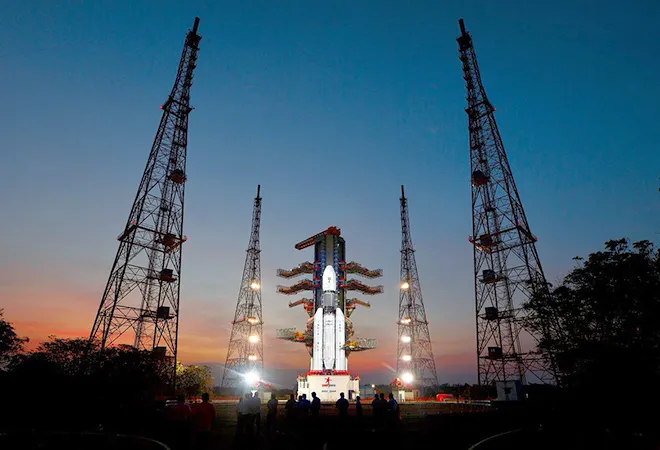The Indian Space Research Organisation (ISRO) had successfully launched its new and heaviest rocket. The Geosynchronous Launch Vehicle Mark III (GSLV Mk III) validated a new and powerful cryogenic engine designed indigenously. The launch is certainly a major mark on India’s space programme, offering an appropriate closing to a tumultuous period in ISRO’s history. Reaching this milestone is significant for realising next generation engines and launch vehicles, scaling up the launch capacity of India for various missions.
The GSLV Mk III draws its inspiration from ISRO’s vision to make India self-reliant in launch vehicles. Even as design and development work on the Polar Satellite Launch Vehicle (PSLV) for meeting remote sensing requirements was going on, the ISRO leadership initiated the GSLV programme for independently reaching the geostationary orbit from Indian soil. The core element of this programme is the realisation of a cryogenic engine which is a closely guarded technology of developed space-faring nations.
ISRO reached out to these countries betting on good and balanced relations it maintained with their space programmes. The rest of the history is well-known that compelled India to resurrect the indigenous cryogenic engine development programme. Unlike the cryogenic engine (CE7.5) on GSLV Mk II that borrows from Russian technology, the advanced cryogenic engine (CE20) supporting GSLV Mk III is developed from scratch by ISRO. GSLV Mk III is capable of launching 4,000 kg into geostationary transfer orbit (GTO) decreasing India’s reliance on the foreign launch vehicle. ISRO is planning to tweak its configuration by replacing the liquid core stage with a semi-cryogenic engine increasing its launch capacity to six tonnes as India’s satellites are growing in weight and sophistication to level with surging global demand for high throughput satellites. An upcoming satellite, GSAT-11, weighs about 5,600 kg which is beyond the scope of GSLV Mk III.
ISRO aims to test a prototype semi-cryogenic engine soon with the possibility of a debut flight by 2021. ISRO expects to increase its launch capacity thereafter to 10 tonnes and eventually 15 tonnes to GTO by introducing modularity, allowing it to feature designs like Octaweb configuration SpaceX uses for Falcon 9 core stage.
The heavy lifters also add to a string of basic critical technologies required for human spaceflight even as a formal programme is yet to be announced. ISRO performed a space capsule recovery experiment in 2007, testing a 550-kg unmanned capsule for 12 days in orbit followed by a test of an unmanned crew module on sub-orbital trajectory during the predevelopment flight of GSLV Mk III. The human spaceflight missions are not standalone in nature, but are a precursor to constructing a space laboratory that can be scaled up to a full-fledged space station.
Currently, the International Space Station (ISS) is the only full-fledged space station while China is experimenting with smaller space laboratories with the eventual goal of building its own station. The basic and applied research on the ISS has led to many innovations in fields such as medicine, engineering, metallurgy, thermodynamics, material science, and human psychology and physiology, helping improve human life on earth. The ISS is also the stepping stone for extending human presence on the moon and Mars in search of resources, eventually culminating in colonisation of space.
Even as India is yet to establish basic infrastructure in this direction, the success of GSLV Mk III has validated many new technologies and management practices guided by a single vision to make India an independent and developed space-faring nation.
This commentary originally appeared in DNA.
The views expressed above belong to the author(s). ORF research and analyses now available on Telegram! Click here to access our curated content — blogs, longforms and interviews.




 PREV
PREV


